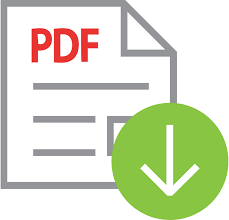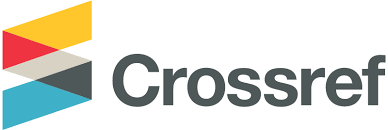Figurative Language in Poetry for Children Selected by Sylvia M. Vardell (2020) with Family and Friends Theme
 ), Leni Marlina(2),
), Leni Marlina(2), (1) Universitas Negeri Padang
(2) Universitas Negeri Padang
 Corresponding Author
Corresponding Author
Copyright (c) 2023 Anggelina Putri, Leni Marlina
DOI : https://doi.org/10.24036/ell.v12i1.119901
Full Text:
 Language : en
Language : en
Abstract
Figurative language is a way of conveying a message using the beauty of language. The use of figurative language is usually found in casual conversation, novels, poems, song lyrics, speech, and poems. This study aims to investigate the types of figurative language in selected children’s poetry compiled by Sylvia M. Vardell (2020). This research focused on the types of figurative language and the meaning of those figurative lines. The method of this research is the descriptive qualitative method. The object of this research is the figurative lines from selected 5 poems with family and friends theme. The researcher also made a conclusion about the most frequent types at the end. To achieve the goal of this research, the researcher employed the theory from Laurence E. Rozakis (1995) about the types of figurative language. Thus, from 43 data, the findings show that there are 12 occurrences of hyperbole, 18 occurrences of metaphor, 1 occurrence of simile, 2 occurrences of ambiguity, 5 occurrences of personification, 3 occurrences of synecdoche, and 2 occurrences of allegory. The researcher finds a conclusion about the most dominant type in this research, which is metaphor.
Keywords
References
Anggiamurni, A. N. (2020). An Analysis of Figurative Language in Poetry by Maya Angelou. PANYONARA: Journal of English Education, 2(2), 149-160. Accessed from https://bit.ly/3e6pBHn
Baldick, C. (2001). The Concise Oxford Dictionary of Literary Terms. New York: Oxford University Press, USA.
Fitria, T. N. (2018). Figurative language used in one direction’s album entitled Up All Night. ELITE, 5(01). Accessed from https://bit.ly/3RntF4r
Hancock, M. (2000). A Celebration of Literature and Response: Children, Books, and Teachers in K-8 Classrooms. New Jersey: Prentice Hall.
Handika, D., Syarif, H., & Marlina, L. (2019). An analysis of minor figurative language used in stand-up comedy performed by Hasan Minhaj entitled homecoming king. English Language and Literature, 8(4). Accessed from http://ejournal.unp.ac.id/index.php/ell/article/view/106779/102562
Hidayah, A., & Purba, T. (2021). Figurative Language Analysis in a Poetry Entitled ‘Life Does Not Frighten Me’, ‘Equality’, and ‘Alone’ By Maya Angelou. Musamus Journal of Language and Literature, 3(02), 27-36. Accessed from https://bit.ly/3ctNVCq
Hulu, D. A., Sembiring, E. N., & Tarigan, N. W. P. (2021). An Analysis of Figurative Language in Ariana Grande’s Album “Thank U, Next”. Linguistic, English Education and Art (LEEA) Journal, 4(2), 317-327. Accessed from https://bit.ly/3cxrQ68
Hunt, P. (1996). An Introduction to Children's Literature. Oxford: Oxford University Press.
Martin Montgomery, A. D. (2013). Ways of Reading: Advanced Reading Skills for Students of English Literature 4th edition. Oxfordshire: Routledge.
Norman K. Denzin, Y. S. (2012). Collecting and Interpreting Qualitative Materials. Los Angeles: SAGE Publications, Inc.
Nur, M. R. O., & Miranti, R. R. (2018). The Analysis of Figurative Language Used in" Still I Rise" Poem by Maya Angelou. Accessed from https://bit.ly/3ABekpQ
Nurhaida, N., & Marlina, L. (2017). An Analysis of Figurative Language in Views (Opinion Column) of Online Padang Ekspres. English Language and Literature, 6(1). Accessed from shorturl.at/qvZ57
Oyesomi, K. O., & Salawu, A. (2019). Assessing the uniqueness of indigenous language in advertising: Analysis of figurative language used in selected telecommunication Yoruba advertisement in Nigeria. The Qualitative Report, 24(10), 2574-2591. Accessed from https://bit.ly/3CImMqa
Rozakis, L. E. (1995). How to Interpret Poetry. New York: A Simon and Schuster Macmillan Company.
Siallagan, S. R., Manurung, S., & Sinaga, J. B. (2017). Analysis of figurative language and imagery in Taylor Swift's songs. ANGLO-SAXON: Journal of the English Language Education Study Program, 8(1), 55-67. Accessed from https://bit.ly/3pUGx6j
Wibisono, R. T., & Widodo, P. (2019). An analysis of figurative language in online short story posted on The Jakarta Post. LINGUISTIK: Jurnal Bahasa dan Sastra, 4(2), 62-72. Accessed from https://bit.ly/3pXFvqd
Wibowo, A. I., & Akbar, A. (2017). Figurative language in the room of my life’s poem by Anne Sexton and still I rise’s poem by Maya Angelou. IJOTL-TL: Indonesian Journal of Language Teaching and Linguistics, 2(2), 117-130. Accessed from https://bit.ly/3CI9EBp
Vardell, S. M. (2020). A World Full of Poems: Inspiring Poetry for Children. London: Dorling Kindersley Publishing, Incorporated.
 Article Metrics
Article Metrics
 Abstract Views : 296 times
Abstract Views : 296 times
 PDF Downloaded : 110 times
PDF Downloaded : 110 times
Refbacks
- There are currently no refbacks.
Copyright (c) 2023 Anggelina Putri, Leni Marlina

This work is licensed under a Creative Commons Attribution-NonCommercial 4.0 International License.












